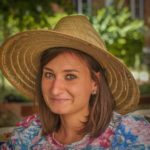Link to Pubmed [PMID] – 28623368
Sci Rep 2017 Jun;7(1):3731
Shadoo (Sho), a member of prion protein family, has been shown to prevent embryonic lethality in Prnp mice and to be reduced in the brains of rodents with terminal prion diseases. Sho can also affect PrP structural dynamics and can increase the prion conversion into its misfolded isoform (PrP), which is amyloidogenic and strictly related to expression, intracellular localization and association of PrP to lipid rafts. We reasoned that if Sho possesses a natural tendency to convert to amyloid-like forms in vitro, it should be able to exhibit “prion-like” properties, such as PK-resistance and aggregation state, also in live cells. We tested this hypothesis, by different approaches in neuronal cells, finding that Sho shows folding properties partially dependent on lipid rafts integrity whose alteration, as well as proteasomal block, regulated generation of intermediate Sho isoforms and exacerbated its misfolding. Moreover, a 18 kDa isoform of Sho, likely bearing the signal peptide, was targeted to mitochondria by interacting with the molecular chaperone TRAP1 which, in turn controlled Sho dual targeting to ER or mitochondria. Our studies contribute to understand the role of molecular chaperones and of PrP-related folding intermediates in “prion-like” conversion.


